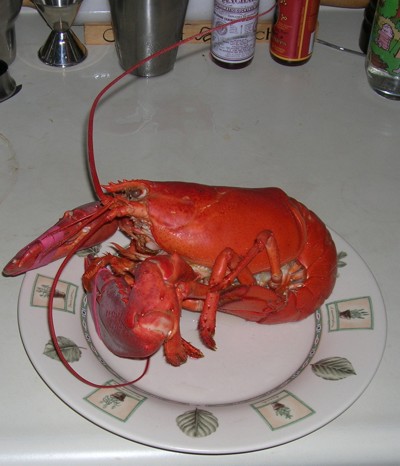Lately, it seems, more often than not, that the NOAA forecast changes at the last minute, and remains marginal. This weekend was no different. We delayed our departure until daylight to better assesses the conditions. Leaving the inlet we were met by 3-4 ft seas with an occasional 5 thrown in to keep us on our toes. Unfortunately we were taking them on our starboard bow. This made the ride a bit bumpy, but observation of the actual wave height made it clear that the conditions were safe to dive.
Today’s trip was to one of the Black Sunday wrecks; the Texel. Back in 1918 the U-151 sank a number of ships in one day know as Black Sunday. The Texel was a steamer carrying sugar from Puerto Rico to New York when she was sighted by the U-151. Rather than using a torpedo, the U-151 forced the Texel to stop by firing warning shots across her bow. The Texel crew was forced to abandon ship, and Germans then sunk her with demolition charges. The wreck now lies some 60 miles off the coast in 230 ft of water.
When we arrived, Bill and I started to get ready to splash. Now that the boat not running into the waves, everyone was more comfortable. The echo on the depth finder did not show much relief. We made several passes and dropped the shot on the best piece we could find. Bill and I jumped in for a closer inspection. The time was about 11:00, and the sun was bright in the sky.
There was a mild current the whole way down so the shot line was angled off into the distance below. We knew the shot weight was not heavy. This prevented us from actually holding onto the line or pulling ourselves along. We swam into the current the bouncy castle for sale entire decent. The surface visibility had been great, and it continued to be clear. We switched on our lights as standard procedure, but they were not necessary. As the bottom started to come into focus, we were still swimming to follow the line. Soon the shot came into view, and the wreck loomed off in the distance.
Bill unhooked the line, and started off toward the wreck. At first I started pulling on the line to give him slack, but he signaled that I should get on with my job, shooting the shot. I quickly hooked up a bag, and filled it for its ascent. Then went over to help Bill hunt for a good spot. We had to search for a little bit before finding a heavy beam that looked and felt sturdy. Wrap, clip, and off we went to inspect the wreck.
I tied off a reel and we started off along the wreck with Bill close behind. The decking along the centerline had collapsed to the sea floor, but the two sides of the ship still provided some relief. We swam down the centerline trying to avoid the fishing line strung above us. Soon two large boilers came into view, and a large engine to the side. Now that would have been a great place to tie in! We examined the deck plates looking for anything out of the ordinary. Here and there we found the holes where port holes had once been. Now large eel pouts made them their homes. Given the remote location of the wreck I was surprised at the lack of fish life. Neither of us saw lobster or scallops which normally litter these deep wrecks.
Unfortunately our time was short, and we had to head up. The dive had been a warm 48 degrees at 220 ft. There was a moderate current all the way up, but the thermoclines were deep enough to be comfortable. The long 20ft stop was a balmy 76 degrees.


